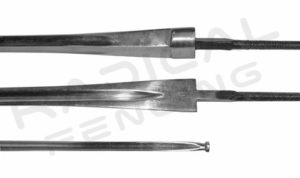When renting or buying swords, you need to make three decisions:
- HILT – what does the director want the sword to look like?
- BLADE – how is the sword to be used by your actors?
On the links below and to the left you will find pages on various hilt styles for different sword types. Most will be outfitted with a particular kind of blade. Not sure of what that means? Just follow this link: Blade Choices
Need replacement epee blades? Only $22 each – lowest price nationwide – order number T25.
If your actors are going to fight with the swords, take a look at some safety tips you might find helpful: On the Use of the Sword
There are GREAT sales deals on every weapons page!! You will never again see prices like these, so fill-up your props cabinet now!
- Rapiers – Full Hilts : Swept hilts, cup hilts, and earlier styles. During the Renaissance a lighter sword was developed which could be easily maneuvered by a small man and could be worn without difficulty even when not on the battlefield. The Spanish developed a cut and thrust weapon (which did neither well) and termed it the “espada ropera”, or dress sword as opposed to the arming sword. The English mispronounced the term until it became known as the “rapier” [pronounced – ray-peer’]. Experimentation was continuous, both in hilt style and in military or civilian use. Earlier versions were mere outgrowths of broadsword styles. The rapier is purely European and used from the late 15th until the late 17th centuries.
- Trim Hilted Swords : Depending on your needs, these guards can cover a tremendous historic range. You just might find something you need here, and save yourself a bunch of cash in the bargain.
- Scimitars were the curved swords used by many Middle Eastern armies, and very likely led to the development of European sabres and cutlasses

